A dramatic natural gateway, The Arch of Cabo San Lucas rises at the precise point where the richly biodiverse Sea of Cortez flows into the vast Pacific Ocean. The area is a vibrant habitat for a wide variety of aquatic life. Colonies of sea lions bask in the sun on the surrounding rocks, or frolic in the water alongside dolphins, rays, turtles, coral, and kaleidoscopic species of tropical fish. During the winter months, migrating whales breach nearby.
What is the Arch of Cabo San Lucas?
The three-story formation of granite and multi-colored rock, locally known as El Arco, is perched at the extreme southern tip of Mexico’s Baja California Peninsula in an area known as Land’s End. In addition to its geologically striking appearance, the Arch’s unparalleled swimming, snorkeling, hiking, sunset views, and once-in-a-lifetime marine encounters — make it one of the world’s most captivating destinations.
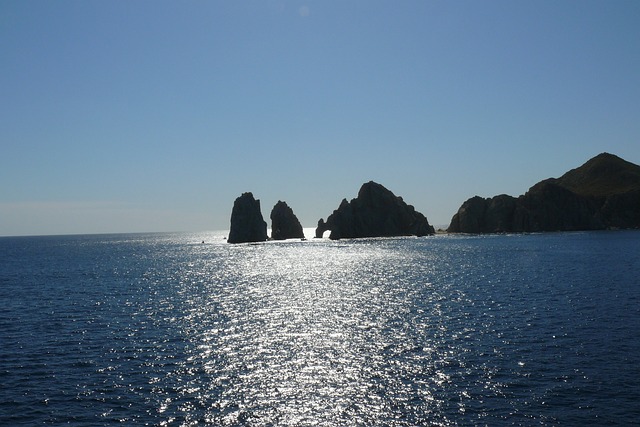
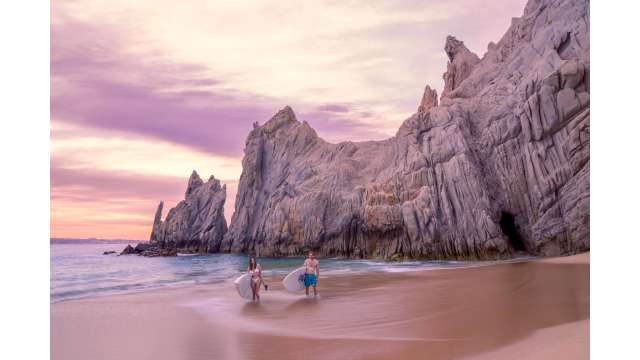
The Historical Significance of Land’s End
Land’s End — so named because there is no land directly south of this point until the South Pole — is steeped in entire epochs of history and lore. For centuries, sailors, explorers and fisherman navigating the rough coastal waters have used the Arch as a North Star to orient themselves.
Booty, Spoils, and Plunder
Pirates, including the notorious 16th-century English privateer Sir Francis Drake, used the area for darker purposes. They would lurk in the inlets, coves, and caves of the formation to ambush and maraud passing ships. When English corsair Thomas Cavendish sacked the 600-ton Manillan galleon, Santa Ana, in 1587, the plunder was so ponderous, it had to be loaded onto two ships, Desire and Content. Desire made it back to England, but Content, and its treasures, were lost at sea. (Perhaps you will chance across its remnants on an exploration of Pirate’s Cave on the Pacific ocean side of Land’s End.)
More recently, in 2014, Hurricane Odile uncovered the Lundenberg, shipwrecked in 1956. Its ruins have formed an artificial reef that has become a favorite site for experienced divers at Land’s End.
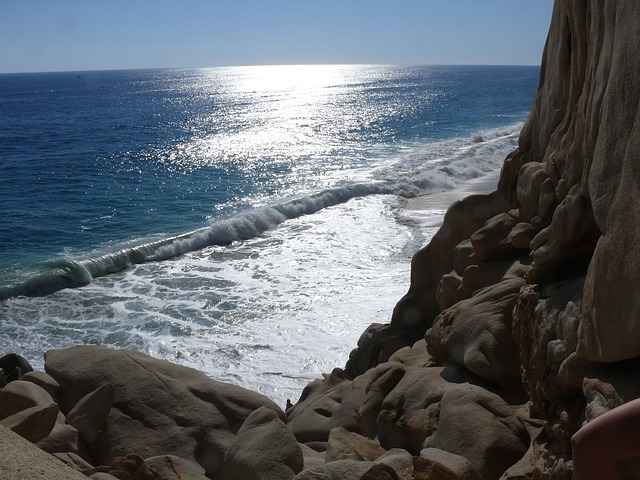
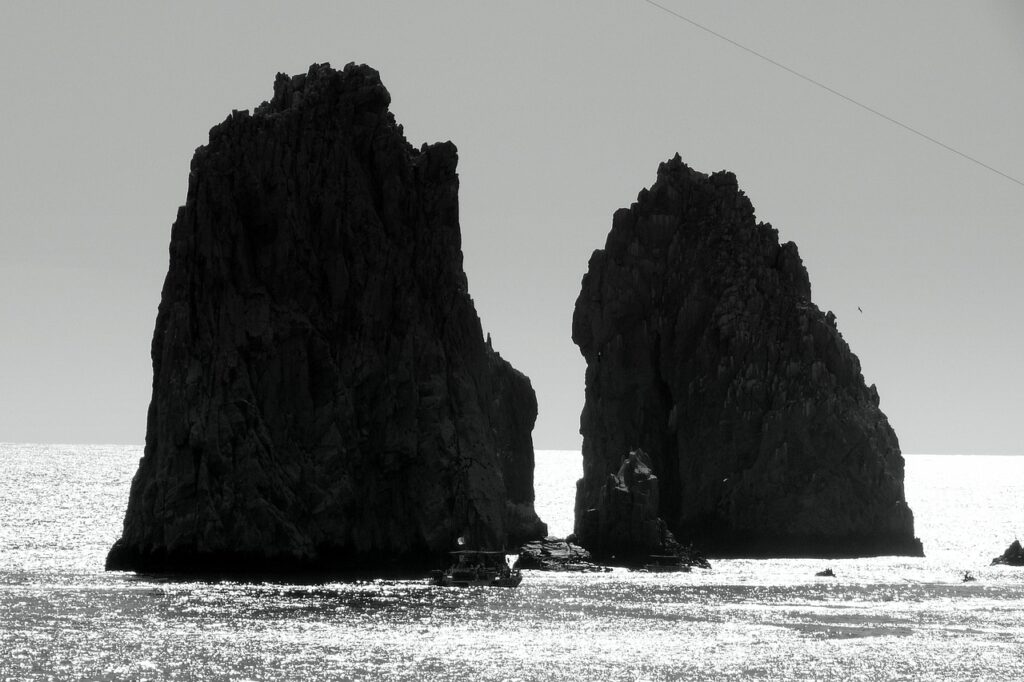
Mystical Passage
Indigenous populations like the Pericú and Guaycura peoples who inhabited the region long before the first Spanish explorers arrived, viewed Land’s End as sacred. Legend has it, the small white cross that sits atop Mount Solmar, — or El Vigiá (The Watcher), the highest point on Land’s End — was either placed there for the protection of the local people, or to indicate an indigenous burial ground. Less spiritual stories include sightings of a mysterious dark sea monster in the area, and the belief that the Arch is not just an aperture to the Pacific, but to another dimension.
How was the Arch of Cabo San Lucas Formed?
A local legend that the Arch was formed by the Aztec wind god, Ehecatl, has some basis in truth, given that the Arch was sculpted by wind and tidal erosion of the granite cliffs of Land’s End. But its history is an even more fascinating story of geological processes. In fact, one of the Arch of Cabo San Lucas facts that many don’t realize is that its formation began long before the Sea of Cortez existed. Approximately 30 million years ago, the earth’s tectonic plates began to shift the Baja Peninsula from the rest of Mexico, eventually creating the sea, which is only about five million years old. Although the Arch has stood for millenia, natural forces and human factors continue to shape it every day. In some small way, everyone who visits becomes a part of its history.
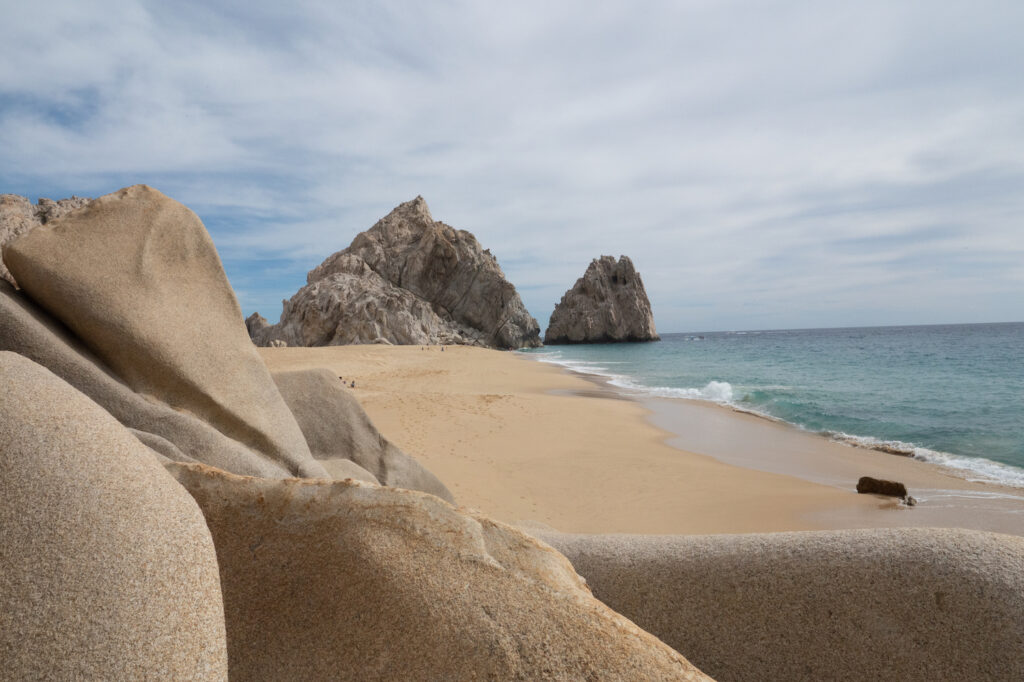
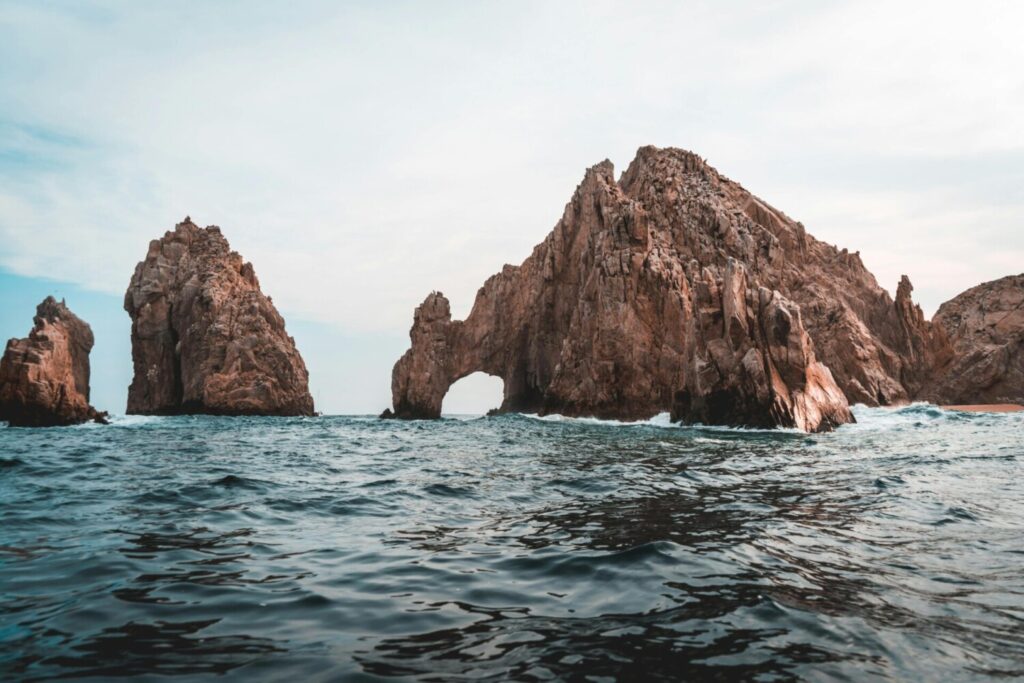
Best Ways to View the Arch
The best way to experience the Arch’s beauty is from the water. You can take a boat from Medano Beach or the Cabo San Lucas Marina. One of the most magical ways to experience the Arch is a sunset Arch of Cabo San Lucas boat tour curated by Hilton Los Cabos — sip cocktails surrounded by spectacular views, as the setting sun blazes the sky and dapples the water. During the daytime hours, a glass-bottomed boat provides an under-the-sea panorama without ever getting wet: a great option for families to see the Arch. Of course, if you prefer total immersion, snorkeling, diving, kayaking, and paddleboarding allow you to get up close and personal with the habitat’s extraordinary sea life. Now matter how you get to the Arch of Cabo San Lucas, an unforgettable experience awaits.
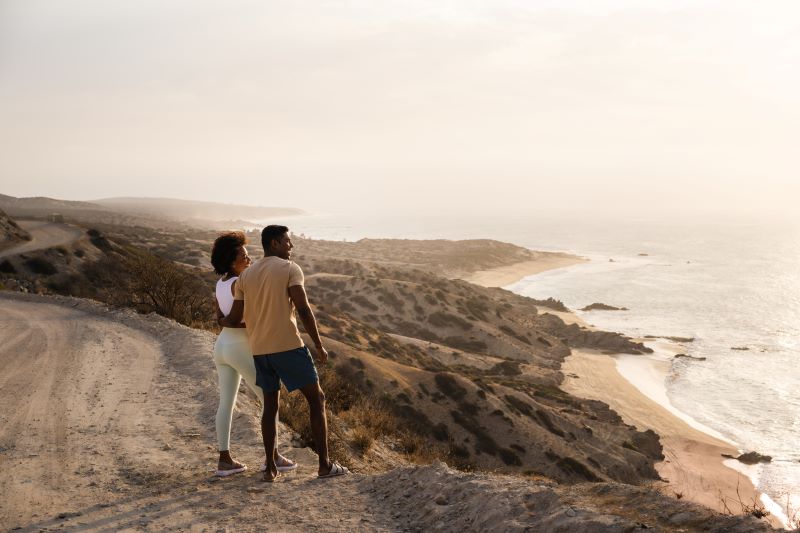
Hiking trails near the Arch of Cabo San Lucas: A Scenic Adventure
Since it’s where the ocean meets the sea, one thing you can’t do is hike to the Arch of Cabo San Lucas. Fortunately, there are plenty of nearby hiking options with breathtaking views. To get a bird’s eye view of Land’s End, begin your adventure at the trail near the marina, and make your way up Mount Solmar. The short (but steep!) climb up the mountain rewards you with jaw-dropping views of beautiful Cabo San Lucas, the Arch, Land’s End… and the limitless horizon.






